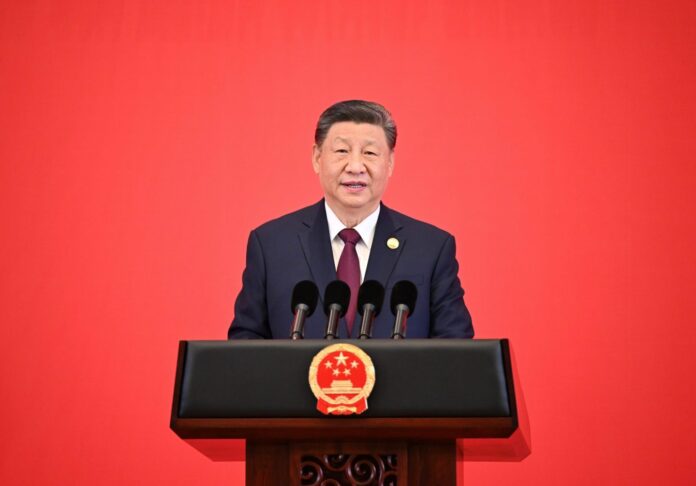Since assuming the role of China’s President in 2012, Xi Jinping has ushered in a profound transformation in every aspect of the country, from domestic affairs to national and international relations. His leadership has not only altered the course of China but also elevated its standing in global affairs. The modern character of China under Xi Jinping’s leadership is a testament to his ability to foster national unity and self-assurance while charting a new direction for the country. Regardless of differing opinions on his approach, it is widely acknowledged that his leadership principles have significantly influenced contemporary Chinese society.
Analyzing Xi Jinping’s significant actions since assuming power reveals the essential foundation for comprehending his influence. The leadership techniques deployed by Xi show both his preferred direction of leading and the main trajectory for Chinese development. He has directed China through five transformative initiatives that have already transformed his administration.
- Anti-Corruption Drive
Establishing an anti-corruption drive under Xi marked one of his earliest and greatest defining policies, focusing on own house cleaning. The political move contained more than Party consolidation goals because it challenged widespread public discontent. The Chinese leader instituted dual strategies to capture officials at all levels “tigers” and on-the-ground personnel “flies” to rebuild trust in the Communist Party. A historical level of official legal proceedings targeted thousands of Chinese government officials. Various observers interpret this move as power consolidation but most Chinese citizens see it as a vital cleaning effort the system needs. The campaign has established China’s political atmosphere where power no longer protects corrupt officials.
This anticorruption campaign is motivated by the three no’s: No will, No opportunity, and No desire to engage in corruption
- Economic Diversification
Shortly after assuming office, Xi Jinping unveiled the ambitious Belt and Road Initiative in 2013. With the BRI, Xi envisioned a global network connecting Asia, Europe, and Africa through infrastructure and trade. This initiative not only positioned China as a global development partner but also provided much-needed investment to countries often overlooked by the West.
Xi Jinping introduced the Asian Infrastructure Investment Bank (AIIB) in 2015 and strengthened China’s role in the Asian Development Bank (ADB) to expand China’s influence in global finance. The goal was to offer an alternative to Western-led institutions like the World Bank and IMF, giving developing countries more funding options. China aimed to fill Asia’s massive infrastructure gap by financing projects like roads, railways, and energy systems. These efforts aligned with China’s Belt and Road Initiative (BRI), boosting its economic and political ties across Asia and beyond. By leading AIIB, China reduced its reliance on ADB, which is largely influenced by Japan and the US.
- Military Modernization
Under Xi’s leadership, China conducted economic outreach and strategically modernized its military forces through the People’s Liberation Army (PLA) reforms. The PLA, under his leadership, evolved into an effective defense force capable of safeguarding China’s expanding interests. China’s actions in the South China Sea, such as strengthening artificial island defenses, demonstrated its military strength. However, supporters of Xi Jinping viewed it as a necessary step to protect national sovereignty. China’s rejection of foreign coercion as a policy was a clear indication of its strategic defense strategy.
- Tech Evolution
After Xi Jinping came to power in 2012, China rapidly advanced its artificial intelligence (AI) sector. In 2017, China launched its New Generation AI Development Plan, setting the goal to lead the world in AI by 2030. The government backed major AI innovations, including smart cities, facial recognition, surveillance systems, and military applications, with companies like Baidu, Alibaba, Tencent, and Huawei leading the way. Recently, China introduced DeepSeek, an advanced AI model comparable to OpenAI’s ChatGPT, highlighting its push into large language models (LLMs) and generative AI. Under Xi, AI has also been a tool for domestic security, with cutting-edge surveillance and data analysis solidifying China’s role as a pioneer in AI-driven governance.
- Poverty Alleviation
Amidst the power plays and global ambitions, Xi also carved a legacy in poverty alleviation. By 2020, China announced that it had eradicated extreme poverty—lifting over 800 million people out of hardship. Villages once trapped in isolation now had roads, electricity, and access to markets. For the rural poor, this was not just a statistic—it was a lifeline. Critics may dissect the metrics, but for millions, life has undeniably improved. This achievement became a rallying point for national pride, proof that China’s system could deliver results where others faltered.
Together, these five moves paint a picture of Xi Jinping’s China—a nation determined to secure its future, assert its identity, and become increasingly influential. Each initiative reflects his broader vision: a self-reliant, globally respected, and internally stable China. While his leadership style sparks debate, Xi Jinping has undeniably redefined what China means to itself and today’s world. As China continues to evolve under his watch, the global community watches closely, recognizing that Xi’s China is here to stay.




